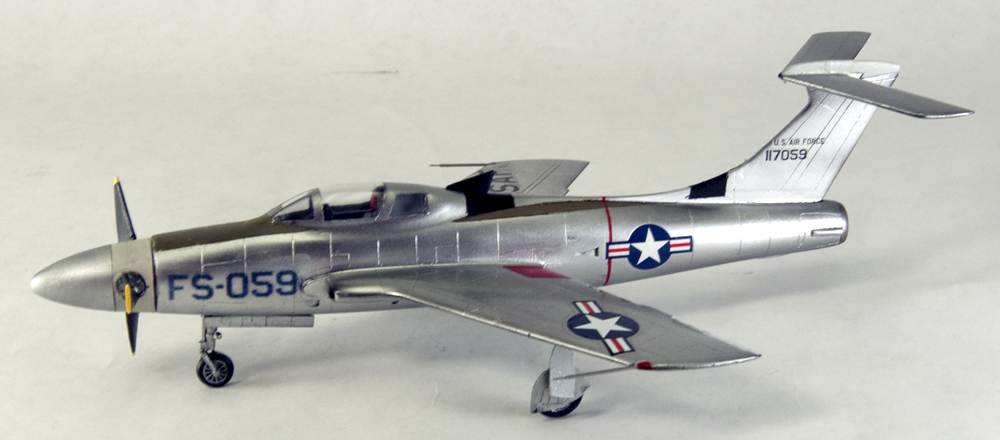
Due to frequent engine problems, as a precaution, the unit was often deployed in flight.

In the event of engine failure, it would automatically swing out into the airstream to provide hydraulic and electrical power.

A notable feature of the design was that the XF-84H was the first aircraft to carry a retractable/extendable ram air turbine. The two prototypes were equally plagued with engine-related problems affecting other aircraft fitted with T40 engines, such as the Douglas XA2D Skyshark and North American A2J Super Savage attack aircraft. Various design features were intended to counteract the massive torque, including mounting the left leading edge intake 12 in (30 cm) further forward than the right, and providing left and right flaps with differential operation. A number of exotic blade configurations were tested before settling on a final design. The XF-84H was destabilized by the powerful torque from the propeller, as well as inherent problems with supersonic propeller blades. The tail was changed to a T-tail to avoid turbulent airflow flow over the horizontal stabilizer/elevator surfaces from propeller wash. To counter the propeller's torque and " P-factor", the XF-84H was fitted with a fixed dorsal yaw vane. Thrust was adjusted by changing the blade pitch of the 12 ft (3.7 m)-diameter Aeroproducts propeller, consisting of three steel, square-tipped blades turning at a constant speed, with the tips traveling at approximately Mach 1.18 (1,446 km/h). The turbine engine also provided thrust through its exhaust an afterburner which could further increase power to 7,230 hp (5,390 kW), was installed but never used.

The XF-84H was created by modifying a F-84F airframe, installing a 5,850 hp (4,360 kW) Allison XT40-A-1 turboprop engine in a centrally-located housing behind the cockpit with a long extension shaft to the nose-mounted propeller. With a projected contract for three prototypes, when the US Navy cancelled its order, ultimately, the remaining XF-84H prototypes became pure research aircraft built for the Air Force’s Propeller Laboratory at Wright-Patterson AFB to test supersonic propellers in exploring the combination of propeller responsiveness at jet speeds. Originally known as XF-106, the project and its resultant prototype aircraft were redesignated XF-84H, closely identifying the program as an F-84 variant, rather than an entirely new type. Navy requirement for a carrier fighter not requiring catapult assistance. Although the USAF Wright Air Development Center was the key sponsor of the Republic Project 3347 turboprop fighter, the initial inception came from a U.S.


 0 kommentar(er)
0 kommentar(er)
